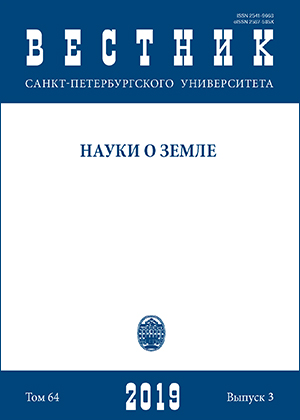Winter convection in the Lofoten Basin according to ARGO buoys and hydrodynamic modeling
DOI:
https://doi.org/10.21638/spbu07.2019.308Abstract
In the center of the Lofoten basin in the Norwegian Sea, a unique natural phenomenon which is located which is a quasi-permanent anticyclonic Lofoten vortex (LV). Winter deep convection is a necessary condition for its stability and one of the main mechanisms of its existence, as it creates favorable conditions for its annual regeneration. Another mechanism to maintain a high anticyclonic vorticity in the center of the basin is the capture of mesoscale eddies that break away from the Norwegian Current. Despite the fact that the important role of deep convection in the mechanisms of annual regeneration of the LV is generally recognized, today in the scientific community there is no consensus on the intensity of winter convection in the region. We estimate a depth of mixed layer (MLD) in the Lofoten basin. We use the method formulated by Dukhovskoy for estimation. Unlike other known methods, this method does not have any predetermined criterion of density difference, and a necessary rule is determined by the features of the profile itself. We compared estimation of MLD in the Lofoten basin according to MITgcm data and ARGO buoys data. Estimates of the MLD and the spatial distribution of their maximum values are obtained for the Lofoten basin. The spatial distribution of Argo profiles is considered. It is shown that T-S diagrams constructed on these profiles are characterized by a pronounced homogeneity and a slight change in density inside the Lofoten vortex (LV) in contrast to the profiles located outside the vortex. The LV area coincides completely with the region of the highest values of the MLD, and this proves the key role of deep convection in the existence of an anticyclonic vortex in the center of the basin, as well as the need for its study. Graphs of the spatial distribution of MLD in excess of 300 and 500 m are analyzed.
Keywords:
Norwegian Sea, Lofoten vortex, Lofoten basin, deep convection, ARGO, mixed layer depth, MITgcm, MLD
Downloads
References
References
Downloads
Published
How to Cite
Issue
Section
License
Articles of "Vestnik of Saint Petersburg University. Earth Sciences" are open access distributed under the terms of the License Agreement with Saint Petersburg State University, which permits to the authors unrestricted distribution and self-archiving free of charge.






